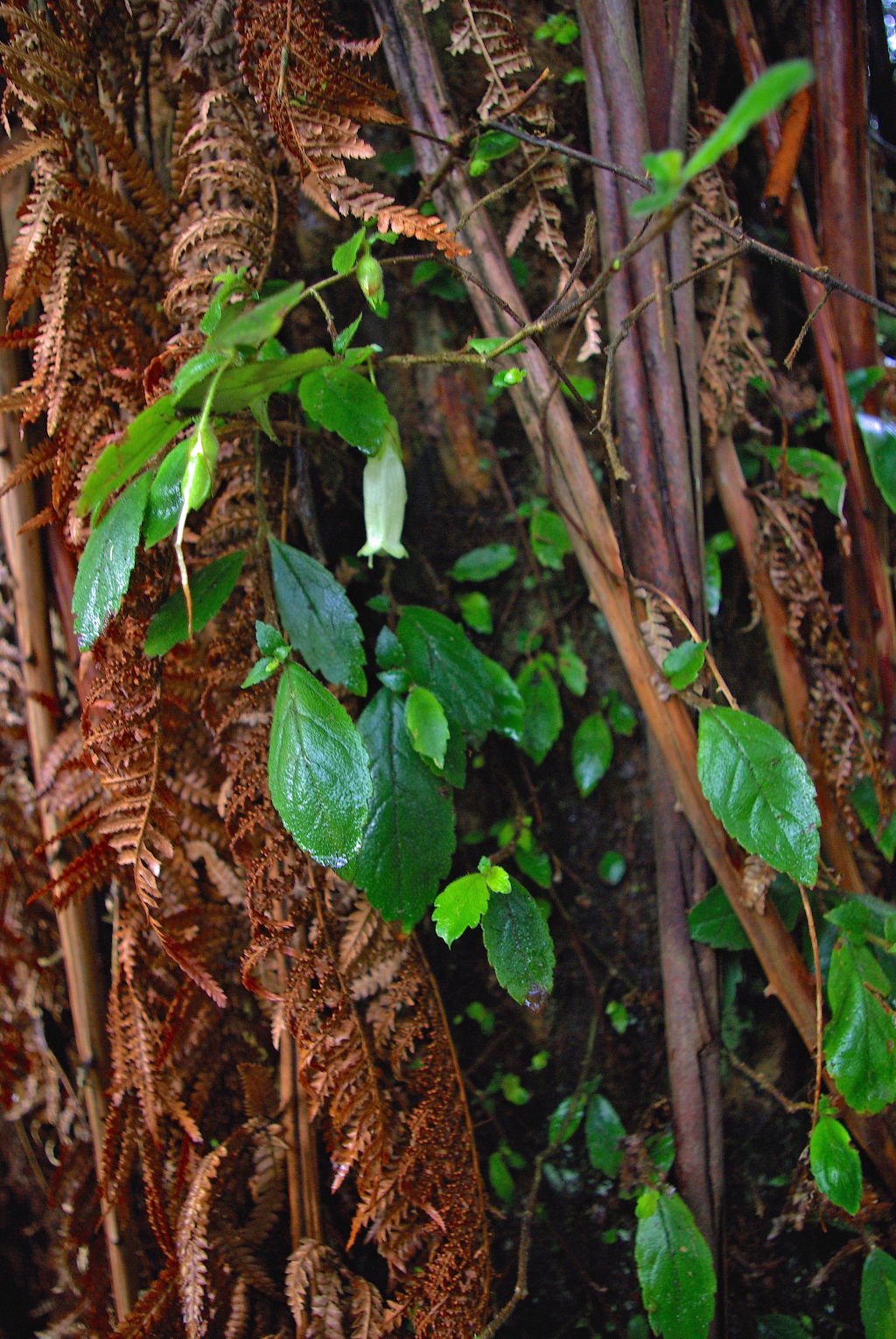Gesneriaceae
Shrubs, climbers, herbs or rarely small trees, often epiphytic; sometimes tuberous or with scaly rhizomes. Leaves usually opposite, often 1 of the pair smaller and stipule-like, sometimes whorled, rarely alternate, simple, entire or toothed, sometimes fleshy; stipules absent. Inflorescence axillary, cymose, racemose or flowers solitary. Flowers usually zygomorphic, bisexual; sepals 5, free or fused into a 5-lobed tube, sometimes fused to ovary; petals 5, usually fused basally to form a tube, often more or less 2-lipped or with an oblique limb; stamens usually 2 or 4, in 2 pairs, 1 pair longer than the other; anthers in coherent pairs, 2-celled, opening by longitudinal slits; disc annular, cupular and 1-sided or reduced to 5 discrete glands inserted around base of ovary; ovary superior to inferior, usually 1-celled, ovules many, borne on 2 parietal placentas, style simple, stigma capitate or lobed. Fruit a loculicidal, rarely septicidal, capsule or a fleshy berry; seeds many, variously ribbed or striated or with hair-like appendages, little endosperm present.
About 120 genera with c. 2500 species, chiefly in tropical and subtropical regions but extending to temperate regions; 5 genera in Australia.
Jeanes, J.A. (1999). Gesneriaceae. In: Walsh, N.G.; Entwisle, T.J., Flora of Victoria Vol. 4, Cornaceae to Asteraceae, pp. 541–542. Inkata Press, Melbourne.
 Spinning
Spinning

